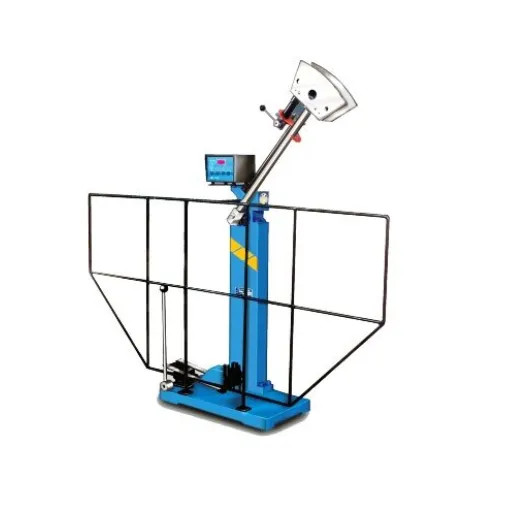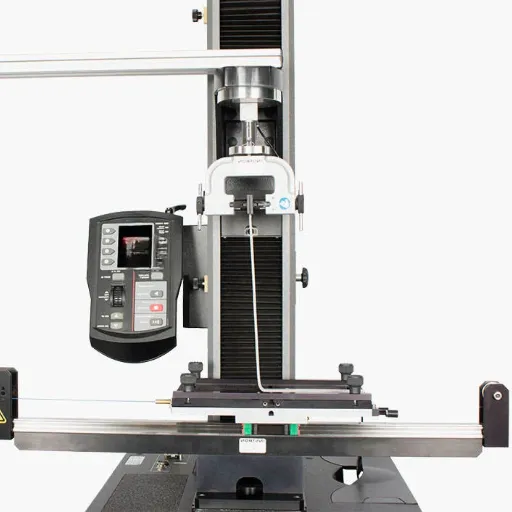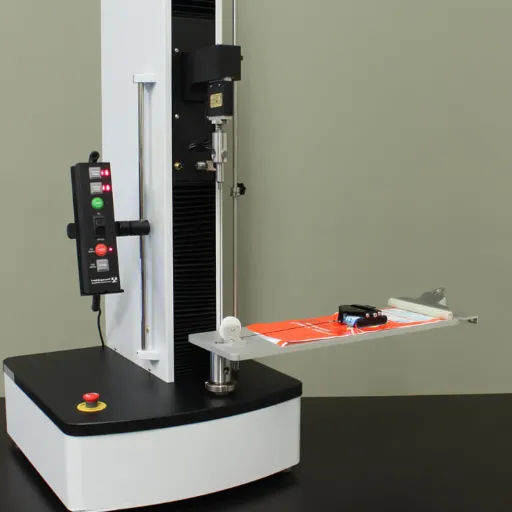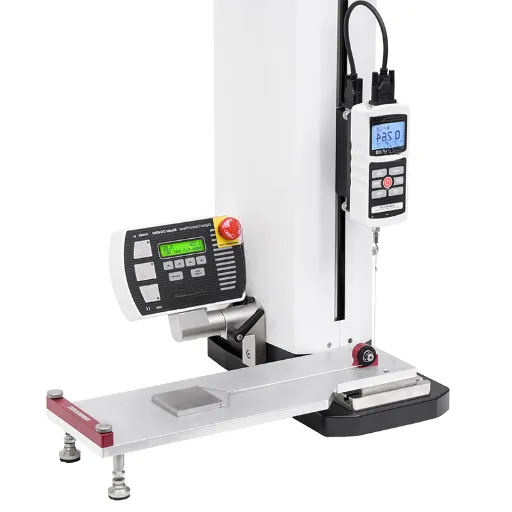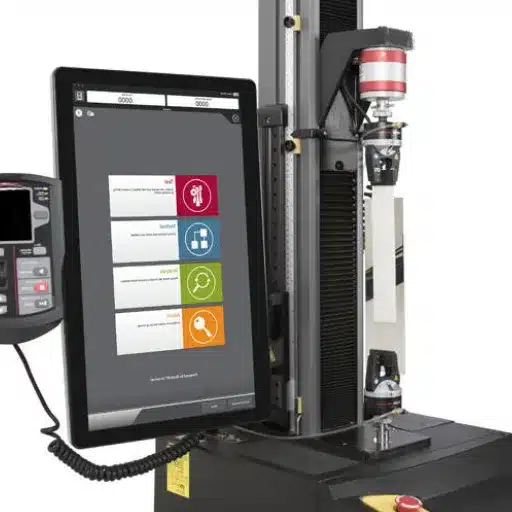The Charpy impact test method is crucial for understanding a material’s sudden impact resistance and toughness. It is particularly useful not only in industrial manufacturing, quality assurance, and materials research, but in any area where knowledge of material behaviour is critical. In this article, I will cover the basic details of the Charpy test, touch the materials testers used for the test, and explain the procedures that make the test material consignment evaluation trustworthy. All of this will be of use to engineers, scientists, or anyone who would like to learn about materials, as I will explain the importance of Charpy testing in many industries.
Understanding Impact Testing

What is Impact Testing?
The impact testing method is concerned with how materials take and react to a sudden force or impact. Impact testing evaluates a material’s toughness, i.e., its capacity to take in energy and withstand fracture under sudden high velocity or high force. This data is invaluable in assessing the likely impact of stresses and strains in real life.
The procedure normally involves a pendulum or a hammer impact to break a notched specimen. The energy taken in to effect the fracture is then measured. With this energy, one can infer the degree of a material’s brittleness or ductility. Materials that take in greater amounts of energy are considered tougher and are used in parts that take impacts. On the other hand, brittle materials tend to fail when subjected to impacts.
The concepts and procedures of impact testing have to be taken into consideration in diverse fields of engineering, such as construction, automobile manufacturing, and aerospace, from the viewpoint of both safety and dependability. The real life situations testing procedures give enable engineers to go for the right components for a given task, guaranteeing proper functioning and operability even in the most trying circumstances.
Importance of Impact Testing
Impact testing serves to evaluate materials under sudden dynamic impact. This evaluation is critical in identifying whether a material is capable of enduring certain impact loads without fracturing. Impact testing is pivotal in assessing unevaluated material properties such as impact toughness, strength, and impact resilience in view of fitness for use.
The results of impact testing are crucial for safety-critical industries such as construction, automotive, and aerospace industries and their components. Such components include bridges, automobile structures, and aircraft, which must function as expected even under impact overload. The testing plays a vital role in the mitigation of catastrophic failures that pose a risk to human life and reduce financial losses from material failure.
Impact testing also aids innovation, given new materials and designs can be tested in near real-world conditions. Testing helps in identifying where failure or inefficiency lies prior to full-scale implementation, thereby aiding in the development of better, safer, and more efficient products. It further aids in the reduction of environmental impact products, better performance, and ensures constant improvements in engineering disciplines.
Types of Impact Tests
Impact tests are integral in understanding how materials respond to sudden forceful loads. The most widely recognized impact tests are the Charpy impact test, the Izod impact test, and the drop weight impact test. Each of these tests is designed to capture a different mode of failure and evaluate the materials under relevant failure conditions.
The Charpy Impact Test
The Charpy test is concerned with measuring the amount of energy a material can absorb during fracture. An example of a test specimen is a notched specimen, which undergoes impact through a pendulum, and the energy needed for impact is noted. The test is especially known for its use in metals and evaluates the toughness and ductility of materials. The tests can be conducted at different temperatures to evaluate material behavior.
The Izod Impact Test
While the Izod test is like the Charpy test in terms of purpose, the specimen orientation is vertical, and the test procedure is a bit different. This test is well known for plastics and metals.
Drop Weight Impact Test
Through the drop weight impact test, the responsiveness of a specimen to high velocity force can be evaluated by dropping a predetermined weight onto the specimen. Materials used in construction such as pipelines and automotive parts can benefit from this test as its usefulness can be evaluated.
Charpy Impact Test Overview
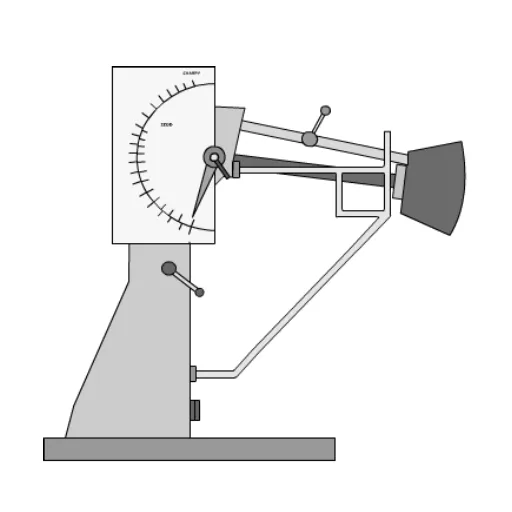
What is a Charpy Impact Test?
The Charpy Impact Test is conducted in order to gauge the toughness of a material and its ability to absorb energy through impact. It is notably beneficial when materials are subjected to sudden stress, and at low temperatures. The test helps in determining whether a material has brittle and ductile characteristics under impacts. Material toughness is its ability to resist fracture. This test makes it easier to know the brittleness of a material. The Charpy Impact Test has a great advantage when testing the materials at low temperatures.
In the Charpy test, an impact specimen is mounted on the vice of the machine in a horizontal position. A heavy pendulum is let to strike it. The notch on the specimen serves a very useful purpose. It serves to reduce the strength of the specimen to a certain value. The toughness test tells us the amount of energy absorbed by the material. The impact of the material tells the energy a material absorbs. The Charpy Impact Test measures the material’s resistance to impact. A material that can absorb more energy is regarded as less brittle and a material that can be used more for robust applications.
The Charpy Impact is one of the most important tests carried out in the construction, automotive, and energy industries in order to ascertain the functionality and the safety of the materials being employed. With the Charpy Impact test, the engineers are assisted in the selection of the materials that are appropriate for the right application. Designers are also assisted in the proper design of the products with the right performance at the minimal risk of any kind of failure.
Charpy Impact Tester: Features and Functionality
The Charpy Impact Tester is important for assessing a material’s toughness when subjected to an impact force. It evaluates the energy a material takes in while fracturing, which offers data about its strength and durability. It is very useful when assessing the impact resistance of a material for use in certain applications.
Perhaps the most important impact feature of the Charpy Impact Tester is its accuracy. The tester utilizes a pendulum which impacts the notched specimen preserving accuracy while offering a splendid repeatability of the machines results. It also maintains the other drawbacks of the standards, such as the specimen dimensions and environmental conditions, which increases the accuracy and comparability of the results. Advanced measurement accuracy enabled sensors are available in many testers.
The Charpy Tester provides far more functionality than performing the tests. It is very helpful in the selection of materials, in the quality control, and in the development of new products. This is useful in the reduction of failure risks and in the identification of materials that are best for the particular application. By the understanding of the materials, engineers and designers can improve performance and reliability of the products, as well as ensure safety, in many different industries.
Comparing Charpy and Izod Impact Tests
Although the Izod and Charpy impact tests serve the same purpose of measuring the impact resistance of materials, the procedure and setup for conducting the tests significantly differ. A significant difference is the specimen setup. For the Charpy impact test, the specimen is placed on two supports in a horizontal position and the notch is placed facing reverse to the hammer’s impact. For the Izod impact test, the specimen is held in a vertical position and the notch is facing the hammer.
| Aspect | Charpy Test | Izod Test |
|---|---|---|
| Specimen Position | Horizontal | Vertical |
| Notch Orientation | Facing away from hammer | Facing the hammer |
| Impact Point | Behind the notch | On the notched side |
The distinct point of impact is also the striker. In the Charpy and Izod impact tests, the hammers behave differently. In the Charpy test, the hammer strikes the specimen behind the notch. In the Izod test, the hammer strikes the specimen directly on the notched side. During the tests, the impact energy absorption behavior of the material changes significantly due to the difference that meets the test and the hammer strike.
Finally, the technique of measuring energy is different in these two tests. The results in both tests are based on the energy absorbed during the fracture, but considering the arrangement and the orientation, the results are applied differently based on the material application. These nuances allow the engineers to understand and choose the proper test for their engineering problems so that the tests are as close as possible to the real assessments of the toughness of the material.
Impact Testing Machines
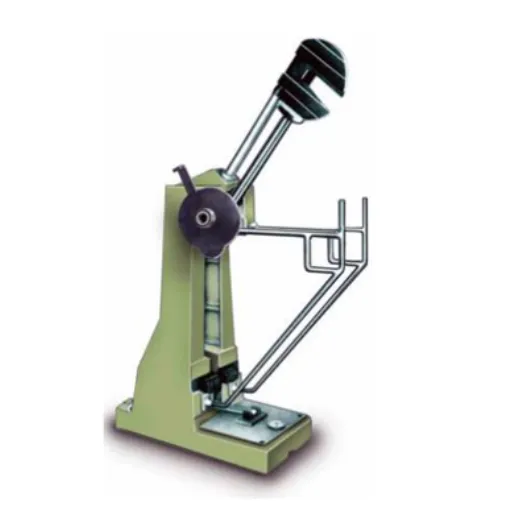
There are several types of impact testing machines commonly used in material testing to determine the toughness of materials. The most widely utilized are the Charpy impact testing machine and the Izod impact testing machine, each designed for specific testing orientations and applications. These machines measure the energy required to fracture a material specimen, providing critical data about its resistance to sudden impacts.
Charpy Impact Testing Machine
The Charpy impact testing machine evaluates a material’s toughness by applying a notch impact test. The specimen is horizontally positioned, supported at both ends, with the notch facing away from the impact. A pendulum strikes the center of the specimen to measure the energy absorbed during fracture. This machine is ideal for assessing materials under dynamic loading conditions resembling real-world applications like bridges and structural components.
Izod Impact Testing Machine
The Izod impact testing machine, similar in function to the Charpy machine, tests material toughness but with a different setup. The specimen is placed vertically, clamped at one end, and the pendulum strikes near the clamping point. This orientation is suited for specific applications, such as assessing the toughness of polymers or other materials used in products where edge resistance is critical. Both machines offer complementary insights into a material’s behavior under sudden stress.
Pendulum Impact Testing Machines
A pendulum impact testing machine is a crucial device for identifying the toughness of a material or a composite. The device measures the capacity of the material to absorb energy over an impact, and the effect energy is tested over a period of time. The device uses the principle of a swinging pendulum to generate the energy required. The device is a vital tool in engineering as it helps determine the suitability of a material for use and is also vital in the manufacturing field. It is also vital in a number of other fields as it, for example, helps in determining the practicality of a material in use. The device’s efficiency and accuracy make it vital in the automotive, construction, and aeronautical industries.
The pendulum impact testing machines score high on their impact testing of metals and other materials, and polymers and composites, as well as other materials. As opposed to other types of testing, which test materials under laboratory conditions, this type of testing helps assess the actual impact the materials will face, which in turn helps guarantee the impact testing safety of the materials. The fact that their testing of materials with different thicknesses and different compositions widens their applications. This type of testing saves a lot of guesswork in the use of the materials and helps guarantee the safety of the materials under impact testing.
The uniformity of the data recorded by pendulum impact tests is another advantage. Such a result, such as energy absorbed (expressed in Joules) or material toughness limits, can be directly compared with industry standards. This uniformity of measurement offers a high degree of reliability over tests performed and facilitates dialogue between engineers, scientists, and governing authorities in certifying materials for particular uses.
Drop Weight Testing Machines
Drop weight testing machines constitute a class of testing equipment instruments used to evaluate the response of a material under impact loading. It is advanced type of testing used to better understand and predict the behaviour of the material when subjected to impact loading. In a drop weight testing machine, a weight is dropped from a specified height on the specimen. The main purpose of this testing is to establish the fracture resistance and energy absorption of the specimen.
One of the benefits of drop weight testing is that it allows for the assessment of a specimen’s impact behaviour in a direct and reproducible manner. Such machines automatically measure and record parameters such as energy absorbed during impact, the impact force, and details regarding the fracture of the material. The drop weight test is especially crucial for testing materials whose failure might entail severe risk, such as those used in the construction, automotive, and aerospace industries.
In addition, drop weight test machinery maintain their usefulness over a long period and provide greater accuracy since they can be calibrated to suit different specimen materials, dimensions, and impact velocities. This versatility makes it possible for the testers to perform bespoke examinations that meet the exact demands of an industry. Drop weight test machines play a vital role in materials safety and reliability certification since they add value to the data pertaining to impact behaviour.
Applications of Impact Testing
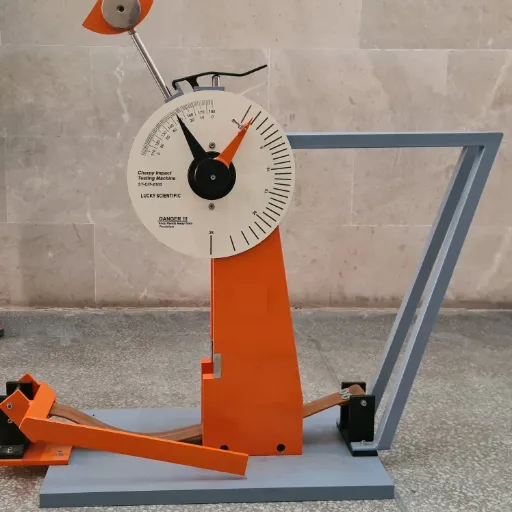
Industrial Applications
Material impact testing is essential and serves many industries, ensuring that materials and components comply with safety and performance requirements. One of the most important industries that require impact testing is construction and infrastructure. Testing materials such as steel, concrete, and composite materials for resistance to sudden impact forces is crucial. It is fundamental to guarantee public safety for the reliable functioning of buildings, bridges, and other infrastructure. Impact testing is equally important in the vehicle and transportation industries. Impact testing for automobile and transportation vehicle body parts, including bumpers and safety devices, is crucial for ensuring the firmness of these parts. These tests allow for the creation of vehicles that are stronger and better equipped to handle crashes. The information obtained from the tests is also crucial for meeting safety standards and improving transportation safety, especially in dealing with risks arising from accidents.
Research and Development Applications
Research & Development Use Cases Impact testing research and development has significant positive impacts on safety and reliability in many industries. Through the analysis of a component’s or a material’s response to impact forces, engineers and researchers are able to develop products with improved strength and durability. Such is important in ensuring that vehicles, infrastructure, and equipment not only function as required but also pass safety tests.
The creation of advanced materials is a prime example of such a specialized use case. Impact testing allows for the evaluation of materials for the best strength-to-weight ratios, which can then be used for vehicle parts. This not only supports the attainment of safety goals but also helps improve fuel efficiency. Furthermore, this research is important in the development of accident injury protective devices and gear.
A further important impact is the improvement in crashworthiness and durability testing. Research and development initiatives address challenges in vehicle safety by using impact testing to acquire data for testing vehicle crashes or the dropping of heavy items on structural parts. This testing addresses challenges in safety that go beyond the compliance level, such as responding to increases in vehicle speeds or changes in the environment. The impact of this modern research, which relies on modern technology and appropriate techniques, enhances safety for people as well as innovation in products in every part of the world.
Quality Assurance and Safety Testing
Quality assurance has the task of safety testing because it verifies that the products and systems adhere to the set standards. It also includes extensive evaluations to assure the safety of the materials while verifying the functionality and identifying risks. Such extensive evaluations are part of quality assurance, which verify functionality, identify risks, and assure the safety of materials. These evaluations help to detect and address teams of hazards early, minimizing the probability of defects that quality assurance would control.
Safety testing tries to find any risks to the users or the surroundings. For example, safety testing can evaluate the performance of components with the help of temperature cycling to high temperature gradients, impacts to specified loads, or repeated loading. Such testing is important to safety because it identifies any weakness that can be a safety concern. It directly benefits product safety and the users’ peace of mind.
Quality assurance procedures are integrated, in the long run, to increase product safety through safety testing. This integration ensures that products satisfy all legal and industry standards and perform as per user needs in any conditions. Likewise, it helps to nurture innovation under the principles of public safety while aiding in the invention of new safer technologies and safer processes.
Impact Testing Machine Price Factors
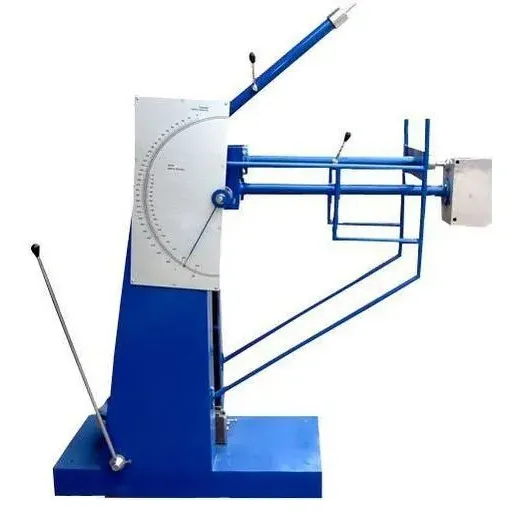
Cost Variations by Machine Type
The pricing associated with impact testing equipment pivots around the specific type of testing machines and the features built-in. The most cost-efficient option tends to be the basic pendulum impact testers on their own. Having a single focus on fulfilling the minimum set of testing requirements for standard materials testing, such testers tend to lack advanced automation and customization features and remain the most economical option for small production setups and academic institutions.
Drop weight impact testers and instrumented impact testers are an example of specialized impact testing machines, and as such, feature a higher price tag. Ford drop weight impact testing, no advanced automation or sophisticated manufacturing technology is offered, so they have enhanced technology for precision testing of a broader range of materials under advanced conditions. Their high selling price is justified by the versatility offered to industries that deal with demand impact testing of advanced materials.
Lastly, pricing variations can also be attributed to manufacturing materials, machine size, and optional features. Increased durability and enhanced functionality to operate in certain specific environmental testing necessitate greater costs for bigger machines. While providing further amplifying testing capabilities for evaluation under fine-tuned specialized conditions, custom-designed digital data acquisition systems and custom fixtures add-ons also add to the price. It is always advisable to know the testing needs in detail as they have a direct bearing on the cost and functionality offered.
Influence of Features on Pricing
- Advanced Automation: Each and every feature of the product impacts the pricing. Features such as automation offering specialised testing capabilities and higher precision can increase the costs. This is because such features require more advanced technology and development as well as increased manufacturing complexity. Digital systems with advanced controls or enhanced data acquisition systems, for example, require greater capital investment for both hardware and software systems.
- Customization Requirements: Pricing is also influenced by the need for customisation. Meeting particular testing needs for example, custom fixtures or environments, which cater to particular needs, tend to work out at a higher price. Although aimed at improving efficiency, such features require specialised design and engineering, which increases the overall cost. Customers should analyse whether such modifications are crucial for their business before making a purchase.
- Durability and Scalability: Last but not least, scalability and durability must be addressed. For example, products meant for large-scale usage or for extended periods use sturdy materials and components that last longer. Such features increase the cost, although they guarantee dependability and low maintenance in the future. Knowing how to combine your feature requirements with a fixed amount of money is very useful in making a decision that supports your business operations.
Budgeting for Impact Testing Equipment
- Define Testing Requirements: Your impact testing equipment budgeting must start by outlining your testing needs: what type of materials and products you’re testing, how often you’re testing, and the standards your equipment should meet. This allows you to select equipment that fits your actual needs without paying for extra features. This in-depth understanding of needs aids in the allocation of funds.
- Evaluate Long-term Value: Following this, assess the options at hand for their quality, dependability, and value over time. Give precedence to equipment that offers durability and low maintenance costs. Good machinery may cost more initially, but the good maintenance and durability often reduce repair and replacement costs in the long term. It is also very important to compare warranties and service support offers as part of the total ownership cost.
- Consider Total Ownership Cost: Lastly, obtain competitive bids from a range of vendors and take into account extra costs like installation, training, and calibration. This allows you to see the true cost of the investment. If you centre your activities around balancing initial cost with long-term savings and operational efficiency, it becomes easier to make a decision that meets both your budget and testing needs.
Frequently Asked Questions (FAQ)
Q: Why is impact testing important in engineering?
A: Impact testing serves the specific purpose of measuring materials’ impact resistance in engineering. Conducting Charpy or Izod tests helps to ensure that a material’s behaviour under sudden strain meets the engineering safety and reliability requirements of its design.
Q: What are the Impact Testing Methods?
A: The Izod Impact Test and the Charpy Impact Test are the standard impact tests. These tests are conducted by fracturing the specimen either with a pendulum or a drop weight. The energy absorbed during the fracture is measured, which provides toughness and impact strength of the materials.
Q: What are the types of impact testing?
A: Types of Impact testing include the Charpy Test, the Izod Test and the Drop Weight Test. Each of these tests has different methods of execution as well as applications making them appropriate for different materials and testing conditions.
Q: How do Pendulum Impact Testers Operate?
A: Pendulum impact testers function by dropping a pendulum from a predetermined height to hit a test specimen. The value of absorbed energy during fracture of the specimen is a very important test data for the material’s impact strength and resistance which is offered.
Q: What are the uses of impact testing machines?
A: Impact testing machines find their use in diverse industries such as manufacturing, construction and materials engineering. They assist in assessing the impact resistance of materials for a variety of products like packaging, automotive, and structural materials.
Q: What is the estimated cost of impact testing machines?
A: The cost of impact testing machines can vary significantly depending on the features, specifications, and even the manufacturer. While basic models come with a few thousand dollar price tags, advanced machines having additional features can be way more expensive.
Q: In what way are impact tests analyzed?
A: Interpreting impact tests is a little simple because they are analyzed based on the amount of energy that is absorbed by the specimen while it is fracturing. Specimens that are capable of absorbing great amounts of energy usually tend to show better impact resistance.
Q: What are the Standards of Testing for Impact Testing?
A: Standards of testing for impact testing are issued by ASTM, ISO, and others. The standards specify detailed procedures, specimen criteria, and testing conditions which facilitate dependable and repeatable testing from one laboratory to another.
References
- Heavy-Duty Impact Tester – BYK Instruments
Provides pricing details and features of heavy-duty impact testers. - Impact Tester Machine – eBay
Explore a variety of impact testing machines with pricing and brand options. - Impact Testing – Instron
Explains the applications and principles of impact testing, including energy absorption. - Impact Testing Equipment – Industrial Physics
Details the applications of impact testing equipment for various materials like pipes, laminates, and ceramics.

